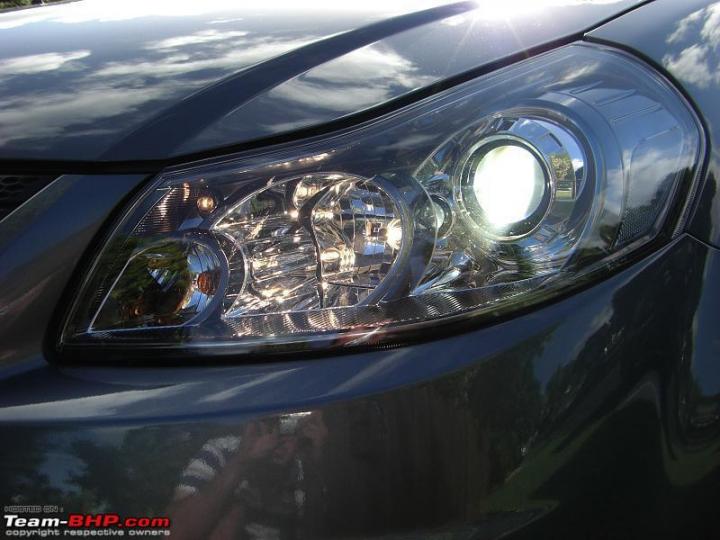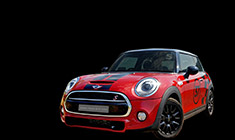News
Evolution of car headlamps over the years: Acetylene to Laser lights
The first headlamps used either oil or acetylene. These lamps were carried over from horse carriages.
BHPian Aditya recently shared this with other enthusiasts.
Evolution of Headlamps
Among the most important features of cars and motorbikes are headlamps. These are vital for driving in dark conditions. They light up the road ahead and help you see where you are going. In heavy rain, they help make your car more visible and easier to spot.
Headlamps have been seen on cars in the late 1800s. Since then, they have changed constantly, becoming longer lasting, more powerful and "intelligent". Let's take a look at how headlights have evolved over the years.
Acetylene Headlamps
The first headlamps used either oil or acetylene. These lamps were carried over from horse carriages. They had to be lit by a match and required frequent refilling. Acetylene was the referred choice because of its better resistance to rain and wind. They had a mirror behind the flame which helped project the light forwards.

However, the beam was not really focused. Instead, it was scattered and not spread evenly. Hence, these lamps were not very effective while driving. They did not last long and were soon replaced by electric headlamps.
Electric Headlamps
Electric headlamps replaced Acetylene headlamps in ~1900. These eliminated some of the problems that acetylene headlamps faced. However, the technology took some time to make its way to most cars. This was due to the need to create a dynamo that was small enough to fit into the engine bay, yet strong enough to develop power for the bulbs. This resulted in a very low light output. Still, these were the lights that set the direction for the development of headlamps.

Sealed beam Headlamps
Sealed beam headlamps were first seen in cars in the late 1930s. They used a parabolic reflectors, a tungsten filament, and a lens sealed together. Not only did these headlamps produce brighter and more focused light than earlier headlamps, they changed the style and looks of cars. too. An advantage of these glass headlamps was that they would not have the problem of oxidation. However, in the event of an accident, they could shatter and cause injuries to other road users. The bulbs put out little light considering the amount of power they used. Besides, the hot filament could leave dark residues on the glass.

In the early 1960s, halogen lamps made their way to cars. These were brighter and more durable. Visibility improved drastically.

Plastic headlamps
In the 1990s plastic headlights made an appearance. These allowed vehicle manufacturers to mould headlights into any shape they wanted. In the process, car designers got the freedom to style their vehicles to their liking. Being cheaper than glass, plastic headlamps were instrumental in building the road to the development of more complex headlamp setups in the years to come.

However, plastic headlamps had their disadvantages too. They suffered from oxidation and yellowing. Besides, as we all know, plastic is not exactly environmentally friendly.
High-intensity discharge (HID) Headlamps
High-intensity discharge bulbs made their appearance in the early 2000s. HIDs produce an electrical arc between two metal electrodes through an inert gas, inside a glass bulb to create light. They developed a lot more light compared to the power they use making them a lot more efficient compared to traditional bulbs. Even smaller HID bulbs could produce the desired amount of light which in turn means that there were few limitations to the alteration of the shape of the headlamps. Additionally, HIDs were available in various colour temperatures, which helped in increasing their appeal.

HIDs were also very popular in the aftermarket. However, traditional headlamp assemblies were unsuitable for fitting HIDs as they would scatter the light produced. Specific assemblies were required for the light to be focused where the driver wanted it to fall.
Light-emitting diodes (LED) Headlamps
Light-emitting diodes (LEDs) first appeared in the 2000s. Today, most of the cars available in the market (excluding the entry-level segment) are available with at least an option of LEDs. These headlights are very bright, long-lasting and require a lesser amount of power compared to halogen lamps.

LEDs were first used as daytime running lights (DRLs). Later, they were used for the low beam only and with time, even the high beam. The development of LED headlamps is truly fascinating. The adaptive high beam ensures that drivers of oncoming are not blinded. Adaptive headlamps also focus their beams appropriately on curvy roads using satellite navigation.

Laser Headlamps
Laser is the latest technology when it comes to headlamps. These laser beams offer an impressive vision and are very efficient. Three diodes pass blue laser beams into a prism which focuses them into one beam. This beam is passed through a phosphorous lens that transforms the light from blue to white, before hitting a reflector that redirects the beam onto the road. Laser headlights are substantially more efficient compared to LEDs.

However, laser beams can be limited when it comes to focus. Hence, they are used for high beams only. Laser technology is relatively new in headlamps and hence, available in cars from luxury brands only.
Check out BHPian comments for more insights and information.











.jpg)







